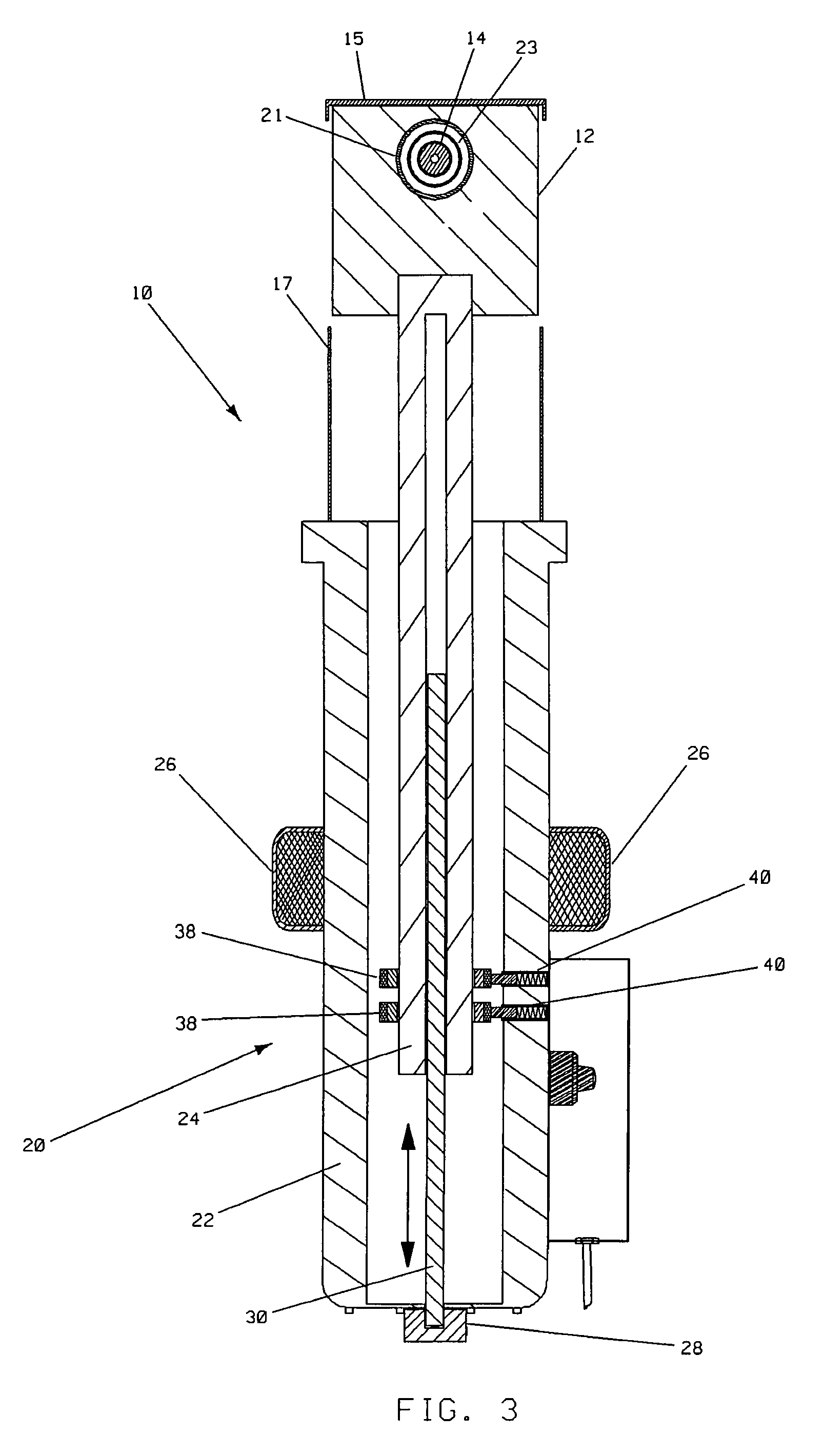Apparatus and method for cutting lawns using lasers
- Summary
- Abstract
- Description
- Claims
- Application Information
AI Technical Summary
Benefits of technology
Problems solved by technology
Method used
Image
Examples
Embodiment Construction
[0036]FIGS. 1-18 illustrate the present invention. In FIG. 1, a cross-sectional view of a single laser assembly 10 is shown. The assembly 10 includes a pop-up laser head 12 with a semiconductor diode laser 14. When not in use, the pop-up laser head 12 is flush with the ground 16 (or below grade) at the base of the grass 18. A cap 15 and cylinder 17 protect the laser head 12 when it is below ground 16. Beneath the ground level 16 is the laser head mounting assembly 20 which includes a shell 22, pin 24 and solenoid coil 26. The pin 24 is mounted for translational movement in the vertical direction. The pin 24 is also mounted for rotational movement caused by motor 28 turning shaft 30. Brushes 40 and rings 38 provide electrical energy from a power supply 34 to power the semiconductor laser 14. Wires (not shown) provide electrical power to the solenoid 26 and the motor 28.
[0037]When electrical current is sent from the power supply 34 to the solenoid 26, it is energized and the pin 24 mo...
PUM
| Property | Measurement | Unit |
|---|---|---|
| distance | aaaaa | aaaaa |
| voltage | aaaaa | aaaaa |
| voltage | aaaaa | aaaaa |
Abstract
Description
Claims
Application Information
 Login to View More
Login to View More - R&D
- Intellectual Property
- Life Sciences
- Materials
- Tech Scout
- Unparalleled Data Quality
- Higher Quality Content
- 60% Fewer Hallucinations
Browse by: Latest US Patents, China's latest patents, Technical Efficacy Thesaurus, Application Domain, Technology Topic, Popular Technical Reports.
© 2025 PatSnap. All rights reserved.Legal|Privacy policy|Modern Slavery Act Transparency Statement|Sitemap|About US| Contact US: help@patsnap.com



